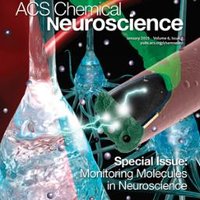
eli merriam
@elimerriam
visual neuroscientist, computational neuroimaging, Pitt/NYU/NIMH.
ID: 239636008
18-01-2011 02:33:54
381 Tweet
424 Followers
401 Following

Extremely proud of Paule Joseph, PhD, MBA, CRNP, FAAN for her dedication to her science and work as a clinician. I am glad she gets to share this with the world 🤗

The long gestating final chapter of my thesis is out in SfN Journals this week as a featured cover article. Thanks to all my coauthors Goris Lab Gabe Stine Eero Simoncelli Tony Movshon and Richard Perez. Short preview below 1/7: doi.org/10.1523/JNEURO…


Excited (and slightly terrified) to share an opinion/short review piece Trends in Cognitive Sciences "Can individual differences explain brain plasticity in blindness?" doi.org/10.1016/j.tics… (open temp link authors.elsevier.com/a/1jz-44sIRvTB…) Check the thread below 🧵👇


In this TINS review we (w/cvnlab, eli merriam, & Eline Kupers) argue that *intensive* (many hours of data) fMRI of single individuals for single-voxel model fitting is a paradigm shift for cognitive/computational neuroimaging. tinyurl.com/intensivefmri 1/2


Exited to share our latest Trends in Neurosciences opinion paper on —intensive— fMRI, with Tomas Knapen cvnlab eli merriam! We discuss ways to maximize both quantity and quality of your large-scale “deep” fMRI dataset, and create a community resource 🧠 tinyurl.com/intensivefmri

Republican or Democrat, NIH is a long-term investment in American's health and economy (for our grandparents, parents, kids). It makes America great. Cutting it risks decades of harm to our loved ones. We must protect & increase funding. Worthwhile read by Mark Histed-🧠 Lab



Andrew D. Huberman, Ph.D. Surya Ganguli David Feldheim Nicole C Rust, PhD Tony Movshon Charles Brenner, PhD X Michael Eisen Dr. Samer Hattar The NIH was founded on the deep insight that sustained stable support for research is the only way to make substantial science & medical advances. That paid off—human genome, dna editing, vaccines, MRI etc. The current upheaval will undermine the NIH as an engine for US industry

Super exciting new work out from the Lee lab at National Institute of Mental Health (NIMH) NIH Intramural!!! nature.com/articles/s4158…

New paper out in Nature Human Behaviour! In it, Wilma Bainbridge and I find that participants tend to remember and forget the same speakers' voices, regardless of speech content. We also predict the memorability of voices from their low-level features: nature.com/articles/s4156…


I am thrilled to share my postdoc work from the Soohyun Lee Lab, nature.com/articles/s4158…. Huge thanks to the awesome PI Soohyun Lee and collaborators Yuan Zhao, Ka Chun Lam, Francisco Pereira, and Charles R Gerfen.


Today is amazing grad student Paul LaFosse's last lab meeting. Here's cool data he showed: Paul used 2p holographic optogenetics (laser stim) to select and stimulate this neuron in a working brain. This ability to change neural activity is key to understanding. (hey Chris Olah)

Andrew D. Huberman, Ph.D. The federal level is the level that can support vital work with NHPs to combat the tsunami of illnesses confronting humans, Alzheimer’s, Parkinson’s, blindness, etc. Scientists who do this work, or understand its value, are compelled to educate for the common good.

Congratulations to Emily Kubota for the publication of your final study from your PhD addressing key questions about nature vs nurture in the wiring of the brain!

A snapshot of Wilma Bainbridge and my recent paper on the memorability of voices from Nature Human Behaviour! nature.com/articles/s4156…

